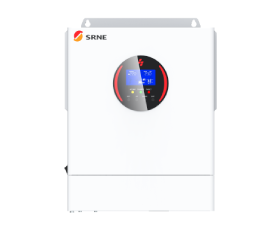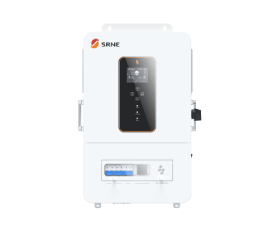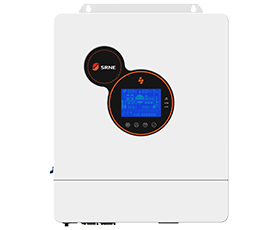The Efficiency of Solar Inverters
The efficiency of an inverter indicates how much DC power is converted to AC power. Solar inverters are very efficient, usually 93-96 percent depending on the make and model. Their efficiency will never be 100 per cent because some of the power can be lost as heat. And also some stand-by power is used for keeping the inverter in powered mode.
Inverter efficiency directly affects your power system’s total energy production. All electricity your system creates flows through the inverter. If the efficiency of your inverter is 80% , you immediately lose 20% of all the electricity you created. If the efficiency of your inverter is 98% , you lose only 2% of your electricity. It is necessary to pay attention to your inverter’s specs!
It’s important to know that inverter efficiency is not a fixed number. Inverters have what is called an ‘efficiency curve’, usually displayed in a chart that shows how efficiency fluctuates with the input power or voltage fed into it. Each brand and model of inverter has its own efficiency curve.
You may encounter the following terms referring to efficiency when looking for an inverter: peak efficiency, Euro efficiency and CEC efficiency. The difference between these is explained below.
Peak Efficiency
Peak efficiency indicates the performance of the inverter at the optimal power output. It shows the maximum point for a particular inverter and can be used as a criterion of its quality.
Simply put, peak efficiency is calculated as DC input to AC output when the inverter is operating at (usually) its rated capacity. For some of the best inverters, the peak efficiency can be up to 99%. That sounds pretty impressive, but remember that although this is a noteworthy number, it is not the final word on inverter efficiency. Your inverter may only operate in its peak efficiency range for a very small part of the day or not at all. This is why the CEC and Euro weighted efficiencies have been developed. They recognize that inverters don’t always operate in optimal conditions, and instead these measurements offer an indication of how an inverter might perform throughout the day.
European and CEC Efficiency
European efficiency is the weighted number taking into consideration how often the inverter will operate at different power outputs. It is sometimes more useful than peak efficiency as it shows how the inverter performs at different output levels during a sunny day.
California Energy Commission (CEC) efficiency is also a weighed efficiency, similar to the European efficiency, but it uses different assumptions on weighing factors.
Euro efficiency and CEC efficiency are both ‘weighted’ efficiencies. In calculating them, the efficiency of an inverter at different spots within the operating range are taken into consideration and balanced against each other depending on importance. These measures are generally more useful than peak efficiency because they measure inverter performance across the range of the inverter’s capacity. This gives you a fuller picture about the inverter’s operating profile over the course of the day.
In calculating CEC and Euro efficiency, instead of looking only at how efficiently the inverter functions at its power input ‘sweet spot’, calculating weighted efficiency requires first selecting a few DC input levels relative to the inverter’s rated capacity.
How to Improve The Efficiency of Solar Inverters
Some of the techniques to improve efficiency of solar inverters are listed below:
1. To reduce total harmonic distortion as well as to control output voltage, use sinusoidal pulse-width modulation technique.
2. To achieve zero-voltage switching, use an auxiliary inductor and two auxiliary switches in a single-phase inverter with neutral-point clamped topology and fixed-frequency PWM control. This can help to improve inverter efficiency.
3. To achieve near-zero common-mode voltage generation for a three-phase inverter, neutral-point diode-clamping is used. This solves desynchronisation issue of the balanced inverter.
4. To improve the voltage, current or capacity level of power-conversion systems, connect multiple standardized modules in series or parallel at the input/output.
5. It is possible to protect inverters from inrush and over current automatically by adding clamp circuits to the resonant capacitance in parallel. High power-conversion efficiency can be achieved by regenerating the clamp current to the input voltage source.






























































































